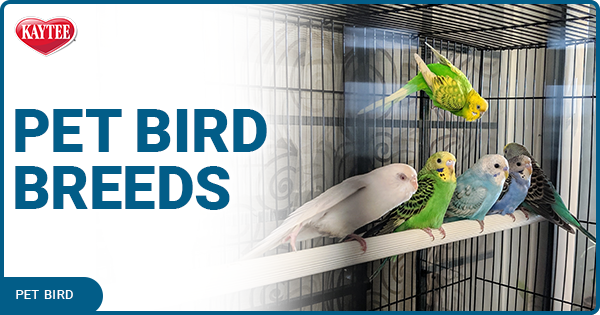Parakeet Behavior and Sounds
You love your pet parakeet like a member of the family.
Let’s be honest, your parakeet IS a member of your family. The thing is they don’t express themselves the same way we do, or even the same way other pets communicate. Pet birds, specifically parakeets, have a unique way of communicating that they are happy or sick, playful, or scared.Use these tips below to better understand how your pet parakeet is feeling and what their behavior means.
Noises
Parakeets are one of the most vocal birds in the parrot family. A happy parakeet will typically be tweeting a song, talking, or even mimicking sounds they hear often.- Talking
Parakeets are able to talk using words that they’ve heard. Some have been known to learn hundreds of words from their owners. They don’t speak as clearly as larger birds like Macaws. With some patience, it can be fun to teach your pet parakeet to talk. The key is repetition! Similar to teaching a baby how to talk, repeat words back to your bird as they try to copy you. Say the words clearly and often, and before you know it, you might get a “Hello” back! Parakeets will talk as a sign of affection and attentiveness for their owners. Male birds typically learn quicker and talk with more frequency and clarity than female birds, but both are very capable.
- Whistling
Similar to talking, whistling is a sign of a happy, healthy bird. Birds can be taught to whistle, but it is recommended to teach your bird to whistle after teaching them how to talk. This is because whistling is easier and more fun for them, which might eliminate the desire to learn words.
- Screaming
Parakeets are noisy birds when it comes to whistles, talking, and daily chitter-chatter. Screaming on the other hand, is not a typical behavior of parakeets. Some parakeets might let out a light scream once in a while, but if you hear what sounds like a genuine scream from your bird, there might be something wrong. This could indicate fear, pain, or distress.
Parakeet Beaks
Beak behavior can be an indicator of many things. Learn about what behavior is normal and what should raise alarm.
- Chewing
Parakeets are chewers. They love to chew on paper, soft wood and toys. This is a not a problem unless there are unsafe items within chewing reach like poisonous foods, unsafe toys, or house plants. Encourage your bird to chew by providing them items which are safe for them to chew. Explore safe treats for your birds to chew on here.
- Beak Grinding
While human teeth grinding is concerning, beak grinding is okay. Parakeets grind their beak sometimes before falling asleep. It is a sign of comfort. They are content and not causing themselves any harm by doing this. You can sometimes hear the little grinding noises from your bird’s beak.
- Regurgitating
Regurgitating food is a sign of affection. Birds will do this with each other, their owner, or a favorite toy as a way of showing their love. Try not to encourage your bird to regurgitate for you, as it may cause unwanted breeding behaviors. If you believe your bird is sick and not showing affection, contact your vet.
- Biting
Parakeets will bite when they feel threatened, afraid, protective or cornered. When protecting eggs, or their mate, parakeets become territorial. They can also feel threatened by unfamiliar humans or pets, which can cause them to bite. A pet parakeet can be trained not to bite. Because biting can also indicate that there is a health issue, make sure your bird is healthy before training or ignoring the behavior.
Parakeet Feathers
- Plucking Feathers
Parakeets that have plucked their feathers out are communicating a problem. If you notice patches or your bird chewing on its feathers, it could be a sign of boredom, a skin condition, an allergy or an illness. Contact your vet if you observe these issues.
- Feather Loss (Molting)
Parakeets will lose their feathers once or twice a year as a way of replacing old feathers. This will occur gradually and naturally, not in patches. You will notice more feathers on the bottom of their habitats or see the pinfeathers emerging from between their existing feathers. To help your bird through molting, provide them some protein in their diet with Kaytee Forti-Diet Pro Health Egg-cite Parakeet Food.
- Wing Flapping
Birds will try to communicate with their owners by wing flapping. This is also a sign of contentment when a parakeet stands on its perch and flaps its wings.
Parakeet Sleeping Patterns
- Sleeping Position
A healthy sleeping position for a parakeet includes their head tucked into their neck or their head resting on their back. They will be perched on one foot with the other tucked into its belly.
Please Note: All birds are unique. Some behaviors may indicate something other than what is typical. It is important to keep your bird safe and healthy by watching for irregular activity and taking your bird to regular vet check ups.
Sign up for our Newsletter or like us on Facebook for more pet tips!
Sources:
Animal Planet Parakeets by Nikki Moustaki










.png?h=315&iar=0&w=600&hash=D97DB36D5E3F21371C65308B485A4F28)


